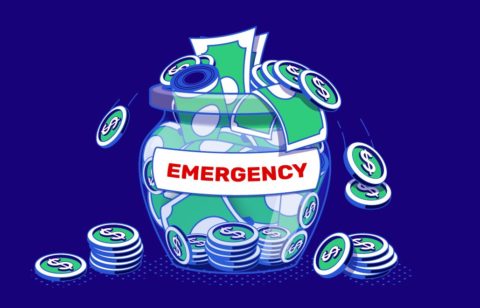Emergency funds are more important than ever as people continue to navigate life during the COVID-19 pandemic, with millions unemployed or underemployed, and all those bills still coming due at the end of the month.
However, despite the fact that an emergency fund can help mitigate the effects of unforeseen financial challenges, the sad fact is that about 30% of people have no cash stockpile on hand whatsoever, and nearly half don’t have sufficient savings to deal with a major unforeseen expense. If you’re one of the people who aren’t ready to deal with a sudden car problem or an emergency repair to your HVAC system, don’t worry. You can start right now to build up the funds you need to be ready when the unexpected hits. Here are five easy steps you can follow to start an emergency fund today.
1. Assess Your Financial Situation
If you’re going to start an emergency fund, the first thing you should do is assess your financial situation. Determine how much, if any, cash you already have on hand that you can use to start the emergency fund. Additionally, you should assess your monthly budget and determine how much money you can allocate into your savings each month. If you think that your current bills and expenses are too high to effectively start saving more money than you currently are, consider cutting back a bit. Foregoing streaming services and dining out may free up enough cash for you to save the money you need for an emergency fund.
If you still find yourself too strapped to save any money, you may also need to adjust other financial goals you have, such as paying down your debts or saving for a new car or home purchase. You may also want to consider working extra at your current job or picking up a side hustle to earn extra money for your emergency fund. Regardless of how you do it, assessing your finances will help you determine what you need to do to start your emergency fund right away.
2. Determine Your Requirements
After you assess your financial situation, you should then determine how much money you’d need on hand during an emergency. Determining your requirements for an emergency fund is an inexact science, and there’s no perfect answer for how much you should save for unforeseen financial circumstances. It may make sense in many cases to build a fund that enables you to pay all your expenses for two to three months without any income coming in.
However, if you’re older and have a pension, social security, and other income that’s paid assuredly monthly, it may not be necessary to have such a robust emergency fund. If you’re unsure of how much money you’d need when the unexpected hits, it may make sense at this point to talk to a trusted financial advisor to help you determine your requirements.
3. Start Saving
Once you’ve determined how much money you’ll need for your emergency fund, it’s time to start saving. You should consider opening a new account for these funds, as a liquid checking or savings account that you can easily access is the best bet. It may make sense to set staged goals for yourself as you build your emergency fund; for example, determine how much money you’d like to have on hand to deal with an immediate financial emergency. Then, determine how big of an emergency fund you’d need to deal with a prolonged adverse financial situation, such as losing your job.
Having tiered goals will provide you the flexibility to adjust how much you’re saving toward your overall emergency fund goals. For example, once you’ve reached a certain threshold balance on your savings, it may make sense to begin allocating more toward paying down your debts once again.
4. Automate, Automate, Automate
One of the best ways to ensure you meet your emergency fund savings goals is to take yourself out of the process as much as possible and automate your savings activities. For example, you should set your primary checking account to transfer a set amount each week or month to your emergency savings account, as doing so will ensure that you remain on track to meet your savings goal, even if you don’t have time to pay attention.
Additionally, if you pick up a side hustle such as working for a ride share program such as Uber or Lyft, or a freelance site such as Upwork, then set your emergency fund as the primary account with those platforms. Doing so will ensure that all the money you make on your side hustle is allocated to your emergency fund. You may also want to consider using a budgeting app to automate your emergency fund savings goals further.
5. Assess and Adjust
Once you start your emergency fund, you’ll need to assess your situation regularly, and you must be prepared to adjust your goals and savings methods at all times. For example, if you’re building your emergency fund while underemployed, and you suddenly have your original hours and pay restored, you may have an opportunity to increase your monthly savings levels and shorten your time horizon for meeting your goals.
Additionally, if you have an unforeseen emergency while building your fund, such as an expensive plumbing problem, you may have to use all the funds you’ve already saved to cover the expense, and then start your emergency fund all over again. So, be prepared to adjust your plan on the fly as you work to build your emergency fund.
Start Building Your Emergency Fund Today
Even if you’re dealing with the economic fallout of the Coronavirus pandemic right now, you should consider starting an emergency fund if you can. Having the cash on hand to deal with an unforeseen expense or emergency can help you navigate challenges in stride and give you peace of mind. Therefore, start putting in the effort to build an emergency fund today, and you’ll be ready for whatever unexpected event is lurking around the corner tomorrow.





